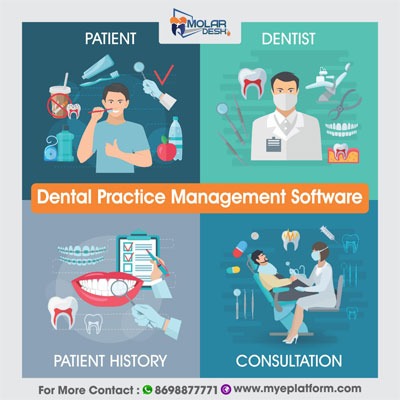Featured
Table of Contents
Running a dental practice today takes more than dentistry expertise. Top dental clinics rely on smart systems that automate day-to-day operations. Let’s unpack the tools, systems, and strategies that keep dental teams productive — from PPM platforms to billing automation and patient communication.
Historically, dental practices used outdated desktop systems to handle records and reminders. It used to be manageable, but today’s patient volume and compliance demands are higher. Regulatory requirements have evolved dramatically. That’s why a unified software ecosystem has become essential.
The Best Dental Billing Software To Reduce Claim Rejections And Boost Cash Flow
Dental practice management software are the operational heart of any clinic. They combine scheduling, charting, billing, and reporting into a centralized interface. Rather than managing five different tools, staff can view appointments, treatment plans, and payments all in one place. The outcome is time saved, fewer errors, and better patient care.
What separates great PPM software from average ones is in how well they connect and measure results. For example, when patient reminders link to scheduling analytics, the entire workflow becomes faster. Analytic tools inside most modern PPMs help you manage staff utilization in real time. This level of visibility empowers better business decisions.
Finding the best system for your team is a mix of features, budget, and usability. Dentrix remains a leader with robust modules for treatment planning, imaging, and analytics. Eaglesoft is known for its imaging and charting. Open-source platform Open Dental offers flexibility and affordability. Curve Dental simplifies multi-location management. Every system has pros and cons. Start with a demo before committing and test real-world workflows. User adoption is the difference between success and frustration.
Staff alignment are underestimated when new platforms go live. Technology only works when people understand the process. Have one staff member own the setup who bridges the gap between admin and IT. Host mini refreshers to see how adoption is progressing. Small incremental coaching pays off massively later.
The Future Of Dental Practice Management: Automation, Ai, And Efficiency
Scheduling software have transformed dramatically. Smart booking engines now handle confirmations and cancellations with real-time updates. Modern systems offer waitlist management and resource allocation. Efficient scheduling boost chair utilization. Forward-thinking clinics enable web booking, letting patients self-book appointments. The result is less phone time for reception.
Another underrated feature of advanced scheduling tools lies in their reporting dashboards. You can measure peak hours, cancellation rates, and rebooking patterns. These insights let you optimize clinic hours. For example certain hygienists have repeat reschedules, it gives you control, not guesswork.
Payment systems and revenue cycles are another critical layer. Handling claims by hand costs valuable hours. Automated claim submission speed up reimbursements. Modern tools check coverage before treatment, meaning better financial transparency. Features like installment plans and e-statements improve collection rates. Running weekly revenue reports keeps the business side visible.
Data
High-volume practices integrate dashboards for cash flow insights. You get a holistic view of finances. No more waiting for end-of-month surprises. You’ll identify which services drive repeat visits. Financial clarity like that improves decision-making year-round.
Marketing is where practice management meets growth. Organic word-of-mouth isn’t enough. Smart ad campaigns generate steady leads. Optimize your Google Business Profile, post regular updates, and create “service + suburb” landing pages. Educational articles that explain procedures simply build trust and visibility.
Marketing automation now play a huge role. Tools integrated with your practice software can send timely recall reminders, reviews, and reactivations. You can segment by patient type, treatment, or date. This personal touch keeps your chairs booked months ahead.
Simplify Patient Scheduling And Billing With Smart Dental Software
Ad campaigns on Google and Meta amplify reach fast. Target by suburb for keywords like “dentist near me”. Re-engage those who visited but didn’t book. Promote seasonal specials to nudge action.
Another underused marketing and operations tool is the dental answering service. No matter how advanced your PPM, a ringing phone can cost you revenue. Trained call teams ensure every inquiry is captured. They sync with your software to schedule instantly. It makes a huge difference for late-night pain cases. Practices that add phone coverage report higher booking rates. Cross-linking blog posts about emergency call coverage creates smooth navigation between topics.

Once your systems are aligned, the results compound quickly. Smarter workflows reclaim hours, while consistent communication builds loyalty. In practical terms, this means fewer no-shows, faster payments, and happier patients.
Dental Practice Management: Software, Scheduling, Billing & Marketing Explained
To implement effectively:Select your main PPM. Migrate your data and train the team.2. Automate communication. Appointment confirmations, recalls, and feedback requests maintain engagement.Digitize finance. Adopt e-invoicing and dashboards.4. Build your marketing flywheel. Link service articles internally.Review analytics. Data on scheduling gaps or claim delays show where to focus next.Keep evolving your systems. Competition won’t slow down, so build a culture that embraces adaptation.
A scalable dental business thrives on integration, not improvisation. When software, staff, and strategy work together, you create a truly modern practice.
The Best Dental Billing Software To Reduce Claim Rejections And Boost Cash Flow

Learn more about improving call handling and workflow automation here.
Table of Contents
Latest Posts
Billing Systems Every Dental Practice Should Be Using In 2025
How To Automate Scheduling, Billing, And Communication In Your Dental Practice
Never Miss A Patient Call Again: Integrate A Dental Answering Service
More
Latest Posts
Billing Systems Every Dental Practice Should Be Using In 2025
How To Automate Scheduling, Billing, And Communication In Your Dental Practice
Never Miss A Patient Call Again: Integrate A Dental Answering Service